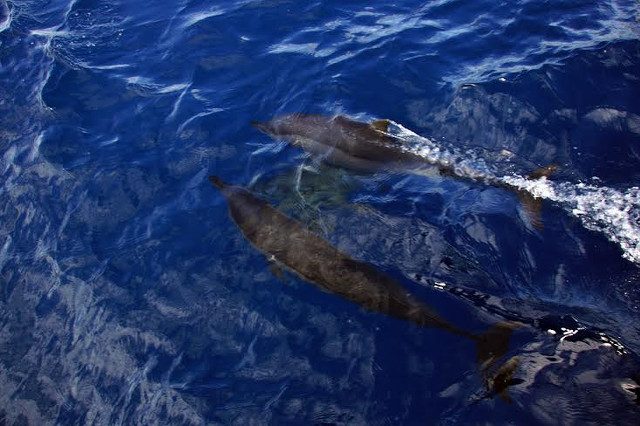SUMMARY
This is AI generated summarization, which may have errors. For context, always refer to the full article.

CEBU CITY, Philippines – “I want to kill those whale sharks.”
This was the strongly-voiced sentiment of Nelson Garcia, mayor of Dumanjug town in Cebu, during an environmental summit on Wednesday, February 11.
His was a lone but persistent voice in the forum, which sought to finalize a general management plan for Tañon Strait, the country’s biggest marine protected area and one of its major fishing grounds.
Garcia, a brother of former Cebu Governor Gwen Garcia, says whale sharks and dolphins are pests, eating two tons of fish a day.
“I want to regulate, not eradicate…. The whales are competing with the fishermen. Right now, I allow. If they catch a whale, kill the whale. Why not?” he told reporters on the sidelines of the event.
When asked if he knew that killing whale sharks and dolphins, both endangered animals, is a crime under national and local laws, he quoted the Bible.
“Man should be the first to survive, not the whales, not the fish, because we will be violating the Bible. God said, man have dominion over the ocean, the fishes, the birds, the animals, and subdue it. That is the order of God.”

When asked what he thought of scientific studies showing that protecting whale sharks and dolphins leads to healthier and more abundant seas, he said, “That’s only a theory.”
But environment officials and scientists, including Tañon Strait expert Dr Lem Aragones said overfishing and pollution in the strait are to blame for decreasing fish catch.
Today, fishermen are only able to catch 2 kilograms of fish a day. In the 1970s, they would catch around 5 kilograms.
‘Allow commercial fishers’
Garcia had more problems with the proposed management plan. In several manifestations he made to the 400-member assembly, he insisted commercial fishing should be allowed in the waters of the strait.
Since Tañon Strait is a protected area, commercial fishers are supposedly not allowed to harvest there. Because the strait is only around 30 kilometers in width, its entirety is considered municipal waters, meaning only municipal fishers are allowed inside.
But because the Fisheries Code allows mayors to make the last call on whether or not to allow fishers, some mayors, including Garcia, let commercial fishers in.
It is an open secret in Tañon Strait communities that some local officials share business interests with commercial fishers.
Commercial fishers, however, are banned from critical marine areas because their massive and efficient fishing methods tend to wipe out fish stocks faster than they can revive. This was according to Dr Mike Hirshfield, chief scientist of conservation group Oceana, which co-convened the summit.
Garcia said commercial fishing provides income for his constituents.
Municipal fishers put up payaos, or floating artificial reefs, which attract large numbers of fish. A few months after, commercial fishing vessels come to harvest the fish gathered around the payaos. The commercial fishers then pay the municipal fishers for their assistance, said Garcia. There are around 500 fisherfolk in his town.
‘Illegal’ protected area
Garcia also insisted that Tañon Strait is not yet a protected area, thus it is illegal to prohibit commercial fishers from entering it. The body of water became a protected seascape by virtue of a 1998 presidential proclamation by then President Fidel Ramos.
“Only Congress has the power to declare a protected area. Not even the President can do that,” the mayor said.
Republic Act 7586 or the National Integrated Protected Areas Act says protected areas declared by presidential proclamation or executive order before the effectivity of the law are to be recognized as protected areas.
The proclamation protecting Tañon Strait was issued 6 years after the NIPAS Act was approved in 1992.
But Section 6 of the law says the environment secretary may propose more protected areas and that a presidential proclamation can be the basis for a law.
“A presidential proclamation is a first step, according to the NIPAS. It went through the same process, culminating in the proclamation,” said Liza Osorio, an environmental lawyer and managing trustee of the Philippine Earth Justice Center.
With or without the law, the protection of Tañon Strait is necessary, she added.
“The area is of national and global significance. It’s the migratory path of large marine species.”
Although Garcia’s sentiments were surprising to environmentalists and scientists present at the gathering, Osorio, who spoke as one of the panelists in some sessions, respects his right to voice them.
“He may have been the only one brave enough to say those things. Maybe the other [local officials] have the same understanding. I welcome any debate on that. If it’s a way to increase their knowledge and bring them over to our side, that’s our challenge.” – Rappler.com
Add a comment
How does this make you feel?
There are no comments yet. Add your comment to start the conversation.